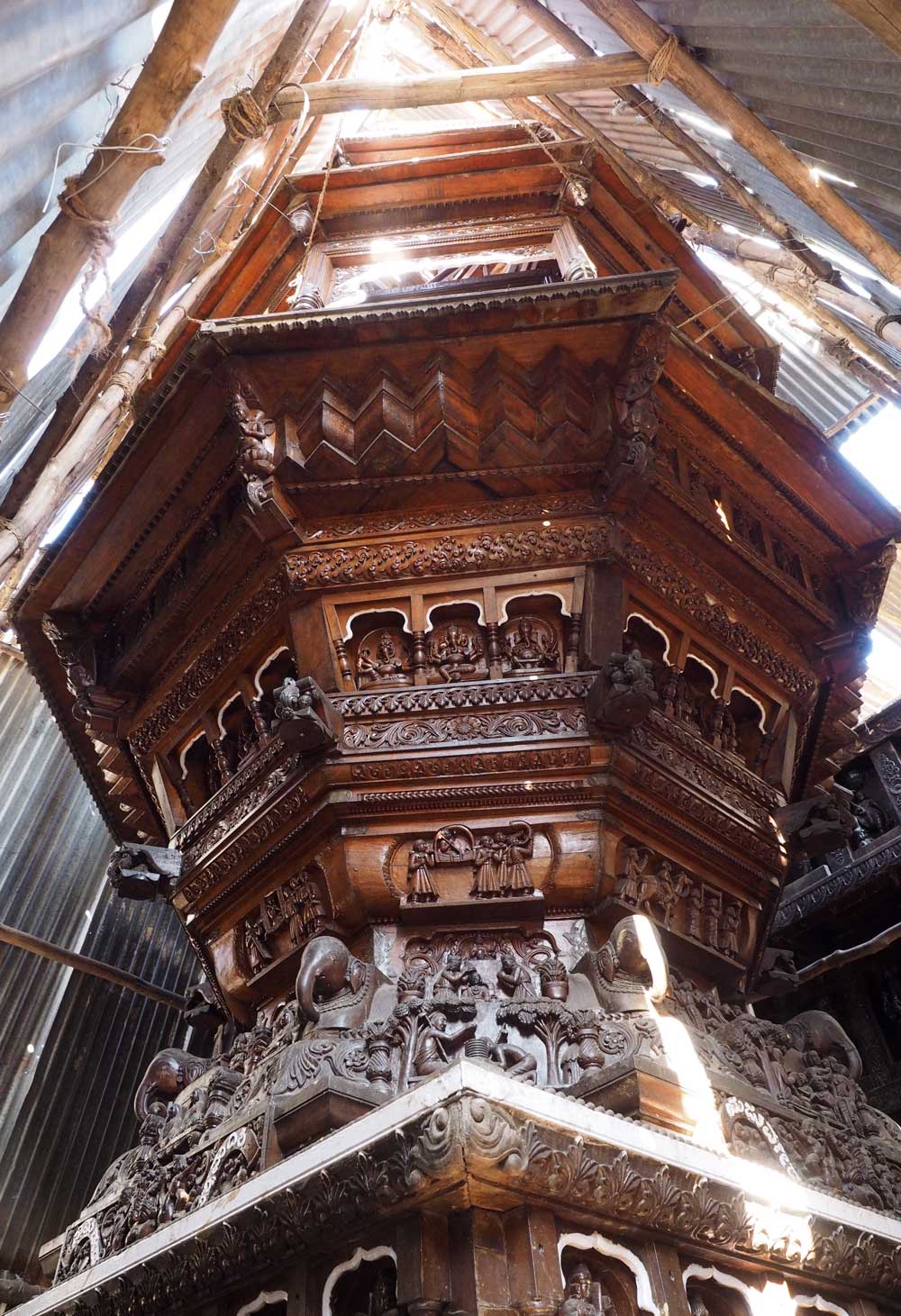
I peeked in the corner of a metal shed along Hampi Bazaar and found this temple cart, used in processions of Virupaksha Temple.
24 January Hampi
A chai wallah came through the train just before the sun
rose over a hazy landscape, and I got a little cup of tea. The Indian man in the
compartment told me he worked at an iron-manganese mine in the area, and got off
at the stop before I did. At the little town of Hosapete, or Hospet, I took a
three-wheeler for the 14-kilometer ride (Rs. 300) through green fields and past
massive granite boulders to Hampi Bazaar, then got off at the Mango Tree
Restaurant. Here I enjoyed the ‘Spanish Breakfast’ of an omelet, fruit salad,
butter-jam toast, and tea. The restaurant also runs the nearby Manasa Guest
House, and I checked into a pleasant room there for Rs. 1500 ($21)/night with
fan, and sat down with The Hindu and The Times of India newspapers. to see some
of the ancient Hindu Vijayanagar Kingdom, which left behind 3,700 historic
monuments spread across 36 square kilometers. The Ramayana story mentions Hampi
as Kishkinda, the realm of the monkey gods. A Telugu prince founded his new
capital here in 1336 and it grew to a great kingdom of about half a million
people by the 16th century, only to be destroyed by a confederation of Deccan
sultanates in 1565.
Around 4 p.m. I headed east on a walk through the
two-story ruins of the ancient Hampi Bazaar. A photo exhibit here has some of
India’s earliest ones of a monument, taken by a British Army officer in 1856.
Most of Hampi’s ruins look nearly the same now, but a few have lost parts of
their upper story. I continued to the end of the bazaar and climbed to the huge
and time-worn monolithic Nandi statue, a vehicle of the god Shiva. A trail wove
east among giant granite boulders to a ridgetop and a fine view of the ruins of
Sule Bazaar and Achyutaraya Temple in the valley below. Beyond lay the deep blue
of Tungabhadra River and boulder-strewn hills. I dropped down and entered the
two gopuram (gateway towers) to the 1534 Achyutaraya Temple, one of the last
great monuments before the fall of Hampi. The gopuram and the temple’s many
stone pillars have bas-reliefs of gods, devotees, and strange animals, though
the inner sanctum no longer shelters a deity. I then turned north through Sule
Bazaar to Varaha Temple—actually dedicated to Shiva—and its temple-like gateway.
Gray langurs scampered about, the youngsters wrestling and chasing, the adults
grooming each other. I then looped back to Hampi Bazaar and had a good South
Indian thali at Mango Tree Restaurant, packed this evening with Western and
Indian travelers.

I peeked in the corner of a metal shed along Hampi Bazaar and found this
temple cart, used in processions of Virupaksha Temple.
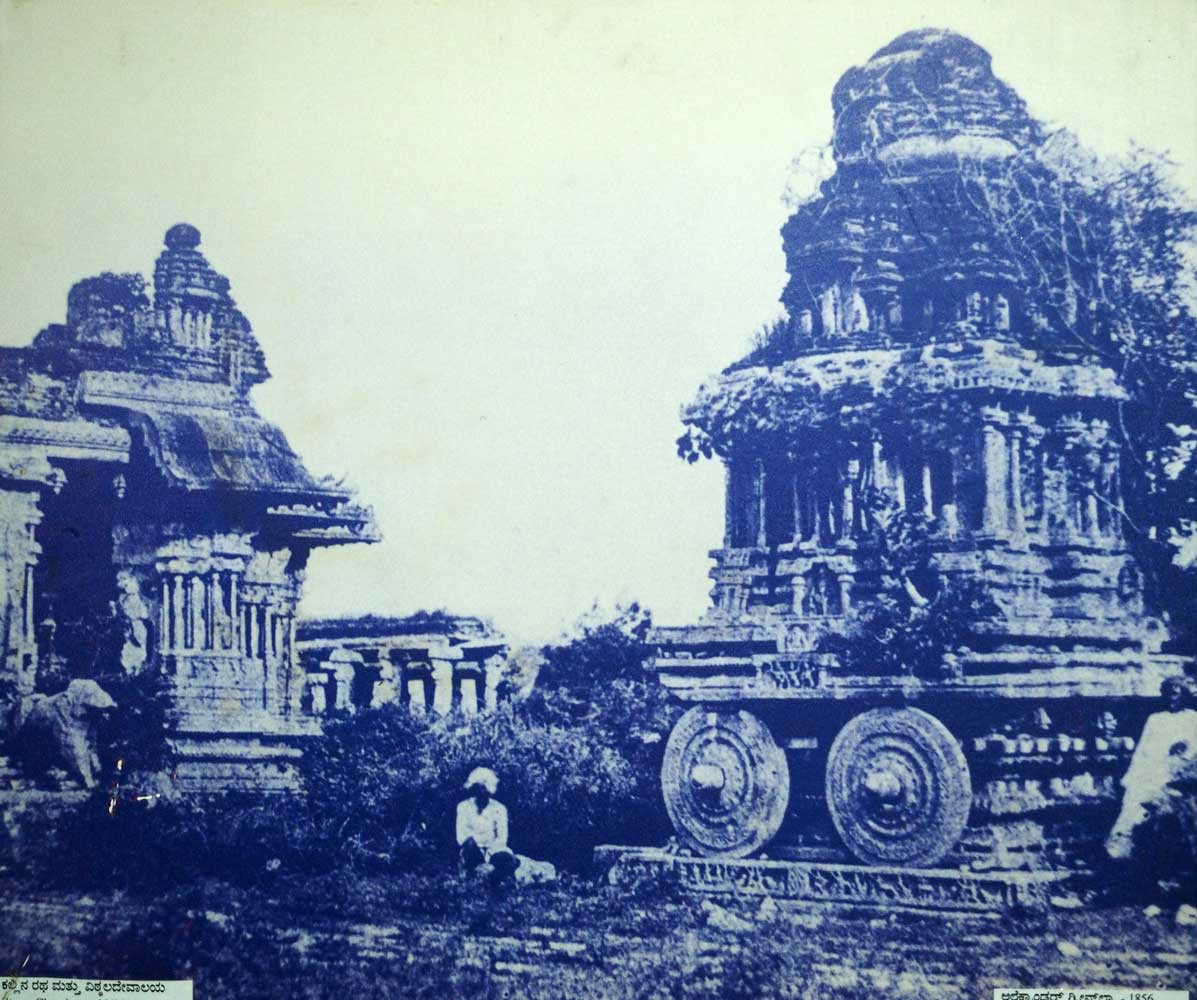
An 1856 view of the famous stone chariot in Vittala Temple
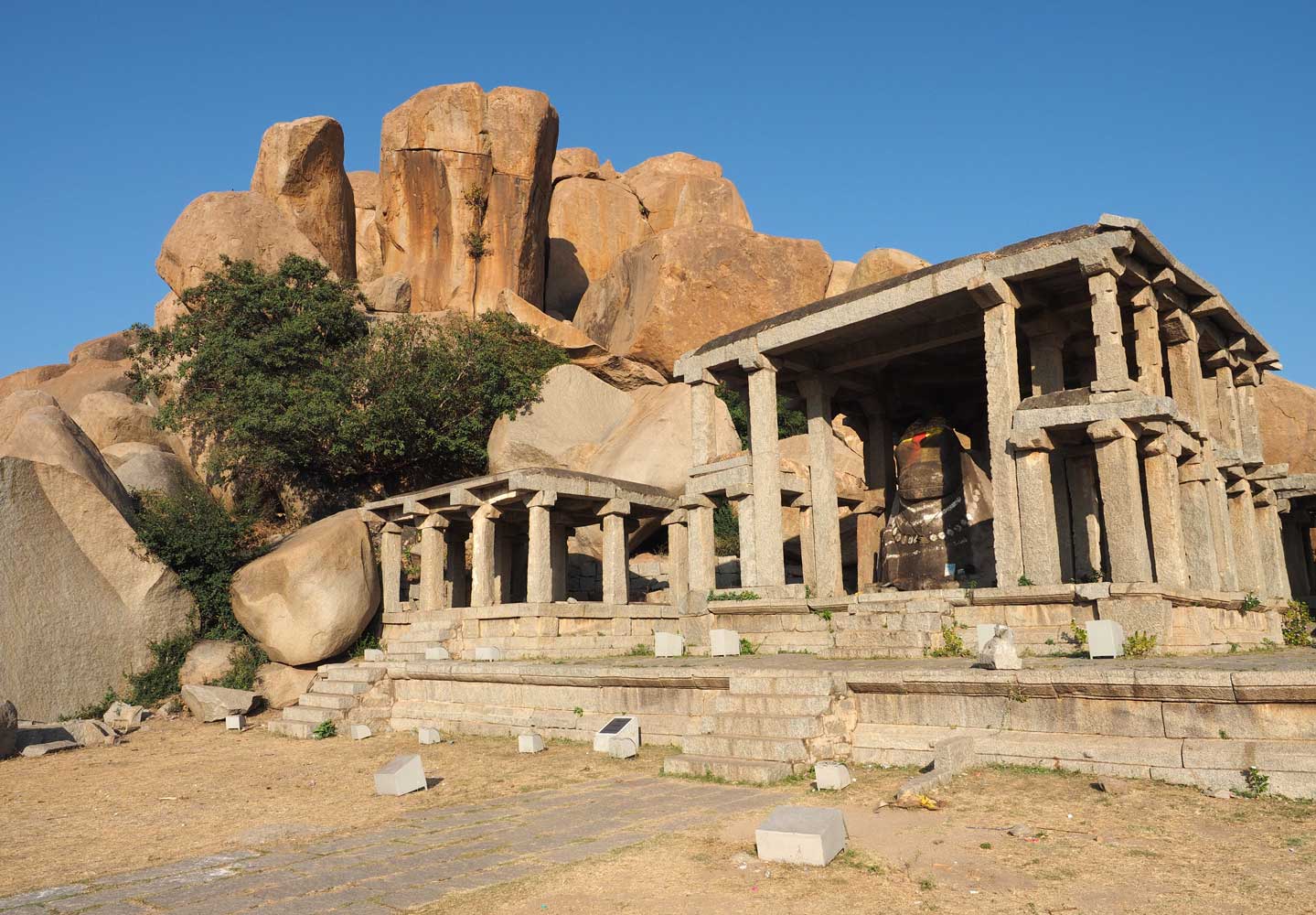
A giant Nandi at the eastern end of Hampi Bazaar faces Virupaksha Temple at
the western end of the bazaar.

Climbing to the ridgetop that overlooks Sule Bazaar and Achyutaraya Temple
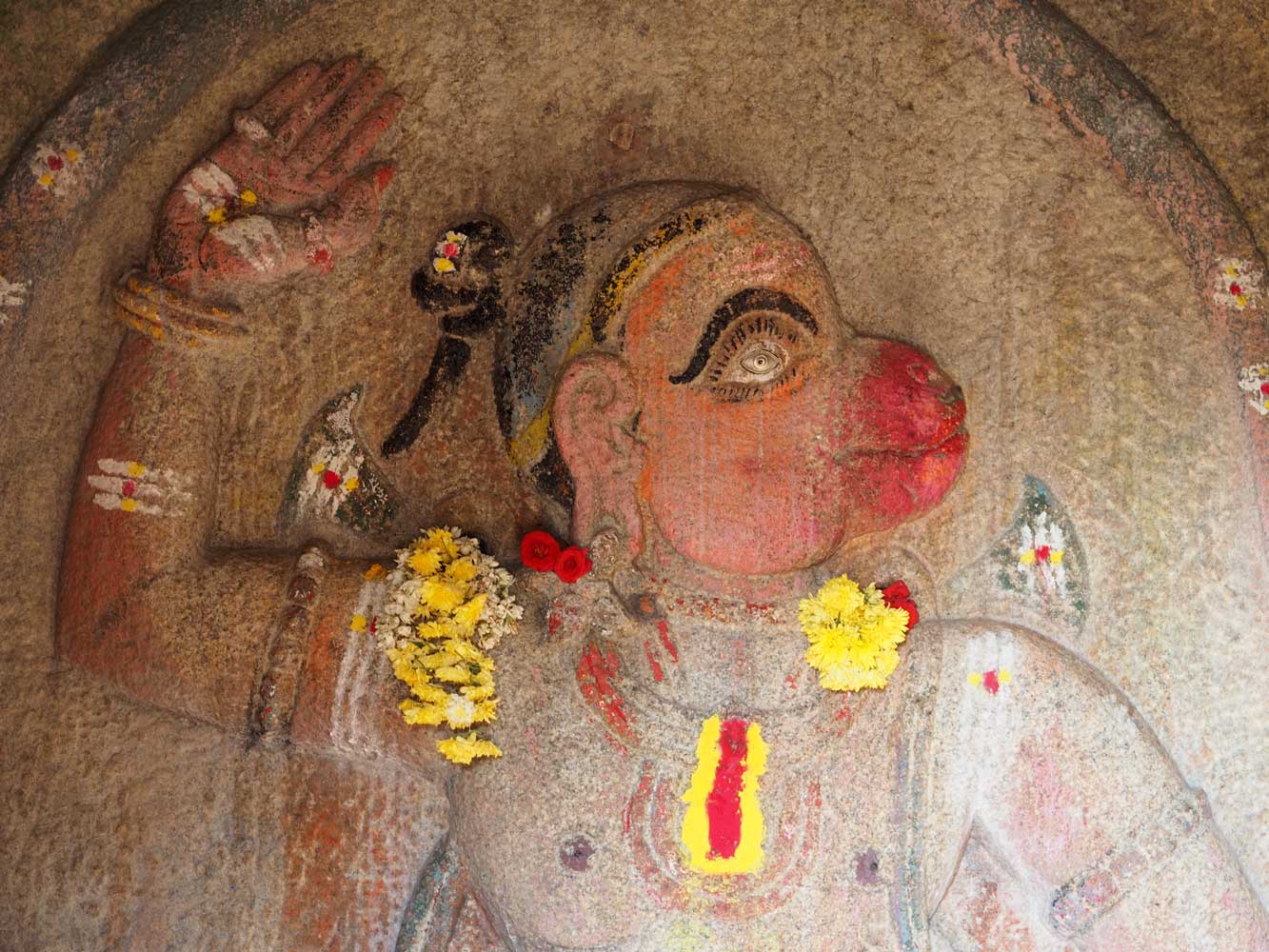
This image of the monkey god Hanuman, tail curving over his head, resides in
a small trailside shrine.
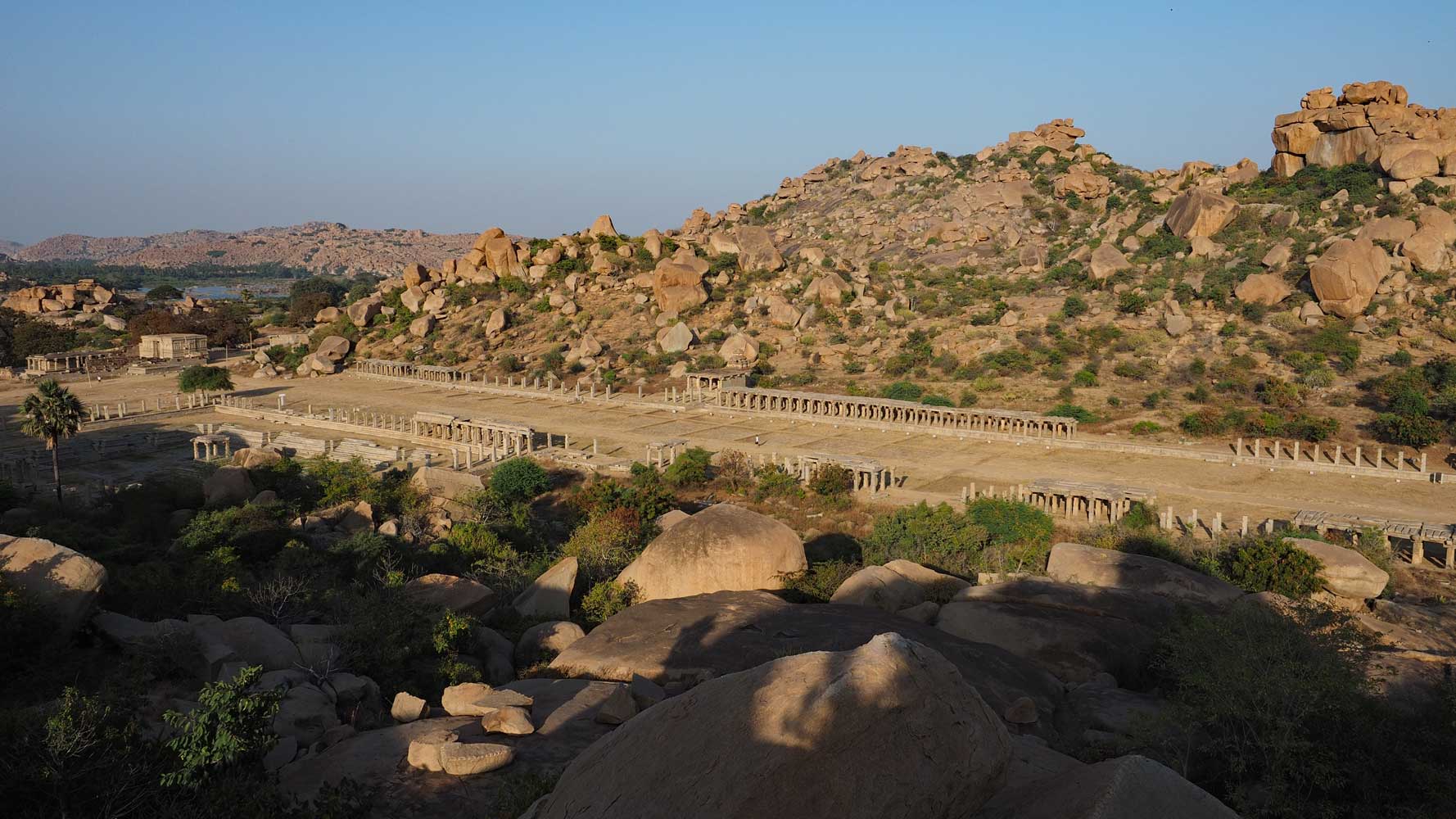
Sule Bazaar with Varaha Temple on the left. Achyutaraya Temple is out of
sight to the right.
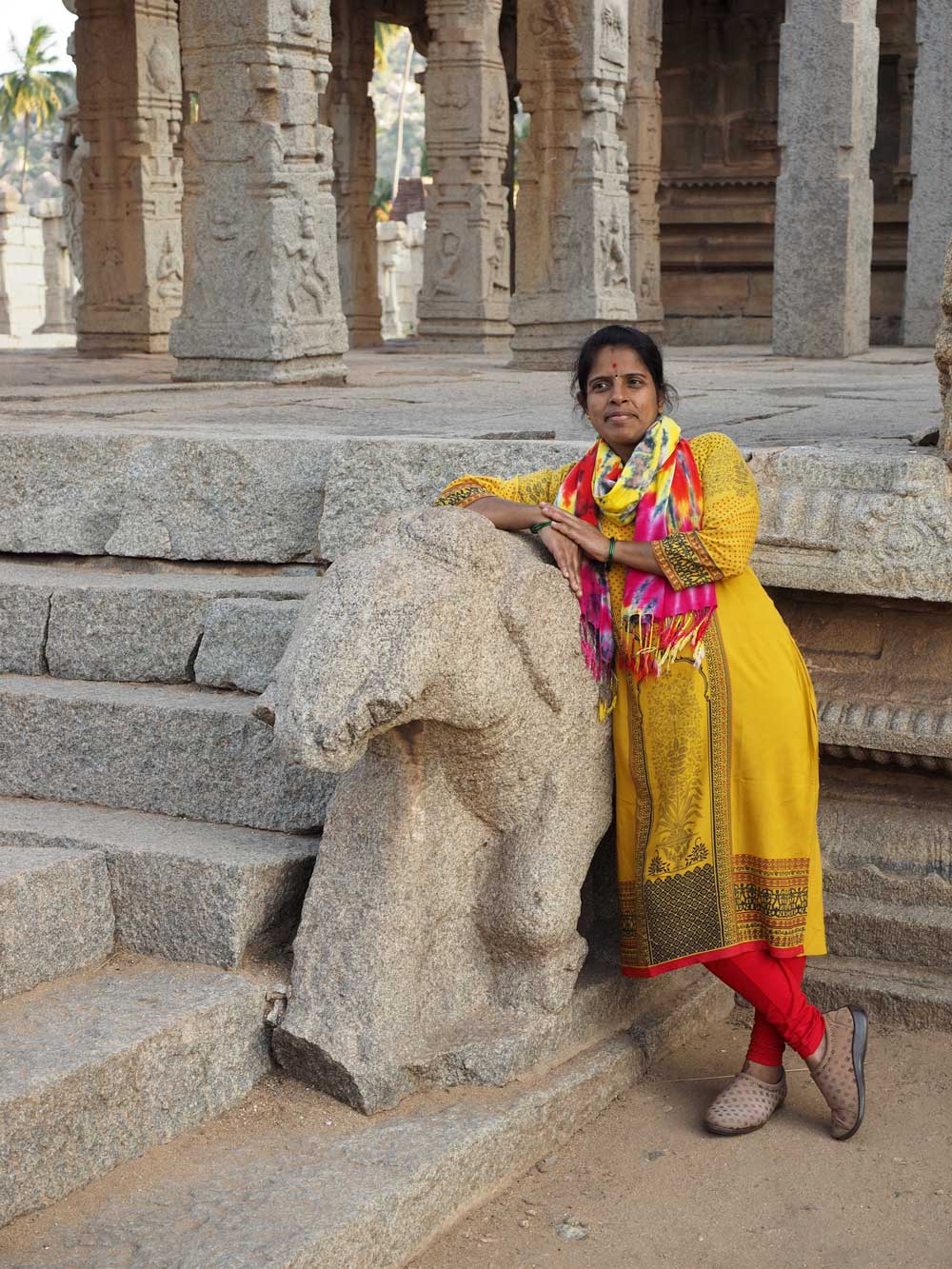
Posing beside an elephant at the steps of Achyutaraya Temple

View from the porch of Achyutaraya Temple looking out to a tiny shrine and
one of the gopuram.

A playful lion on a column of Achyutaraya Temple
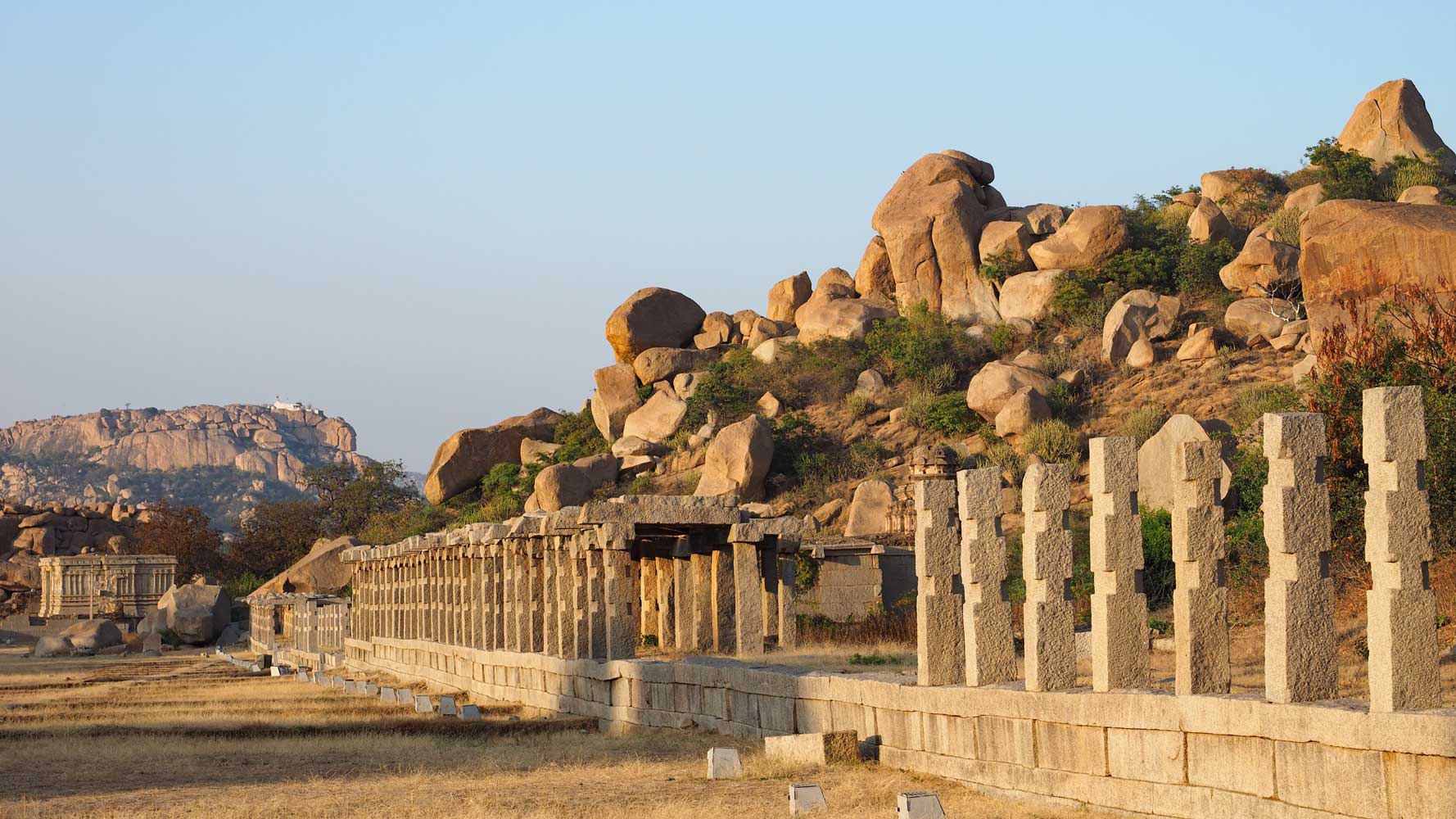
Sule Bazaar and Varaha Temple bask in the late afternoon sun. The white Hanuman Temple
atop Anjanadri Hill stands in the distance.
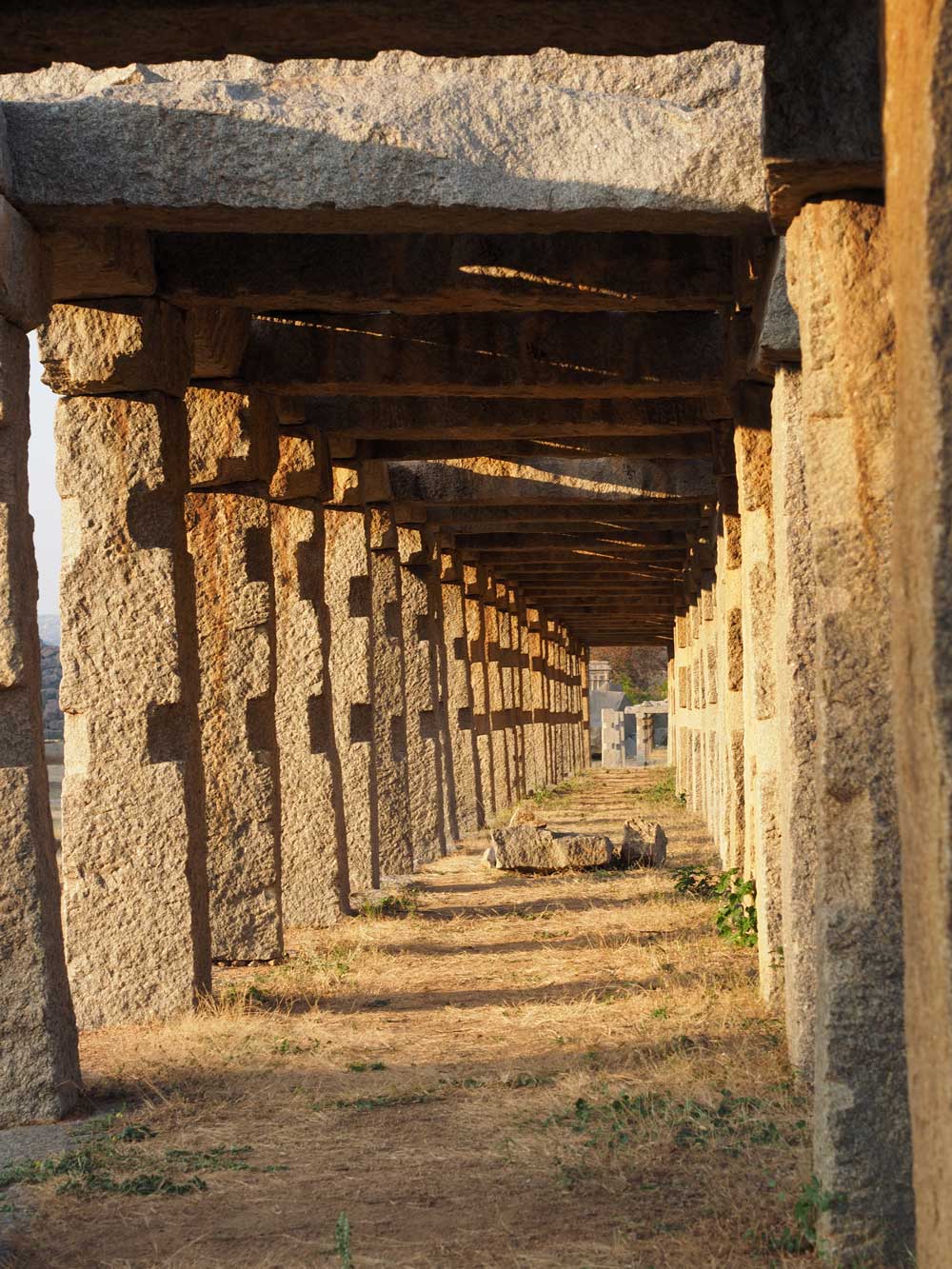
These stalls of Sule Bazaar have long gone quiet.

Blooms near Sule Bazaar
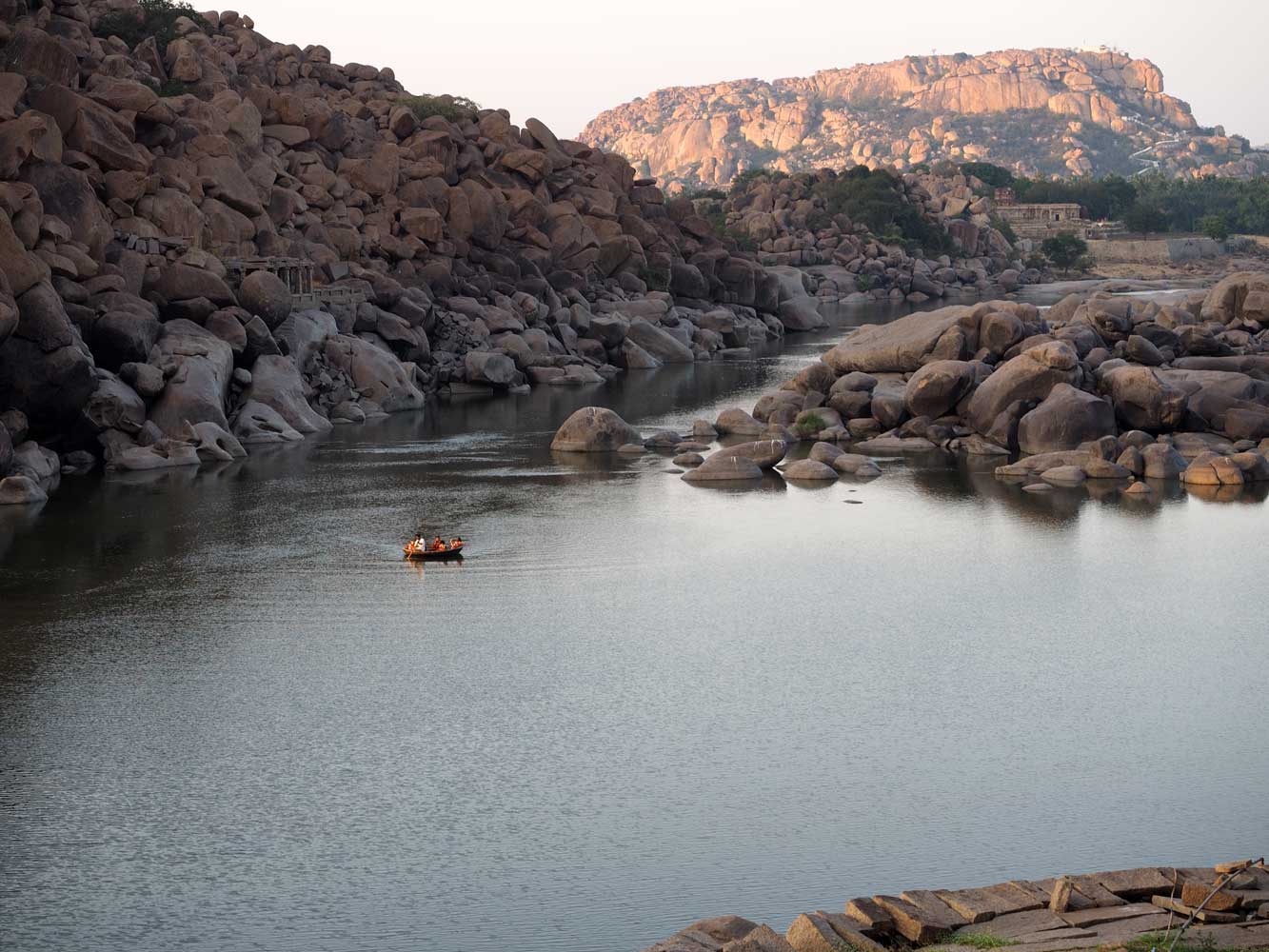
A round coracle boat makes a crossing of the Tungabhadra River.
25 January Hampi
In the afternoon I wandered west a
bit from Hampi Bazaar to the ghats on Tungabhadra River, where women washed
clothing and young men splashed in the water. Small boats puttered across to the
village of Virupapur Gaddi on a large island. The granite rock hosted carved
images of Nandi and other religious symbols. I then walked around Virupaksha
Temple, the only ancient one in Hampi to still be an active place of worship,
and walked up the gentle bare granite slope of Hemakuta Hill, dotted with small
Hindu and Jain temple ruins and other structures. It’s also a popular sunset
watching spot and I stayed to see the golden ball of the sun dip behind the
boulder-strewn landscape.
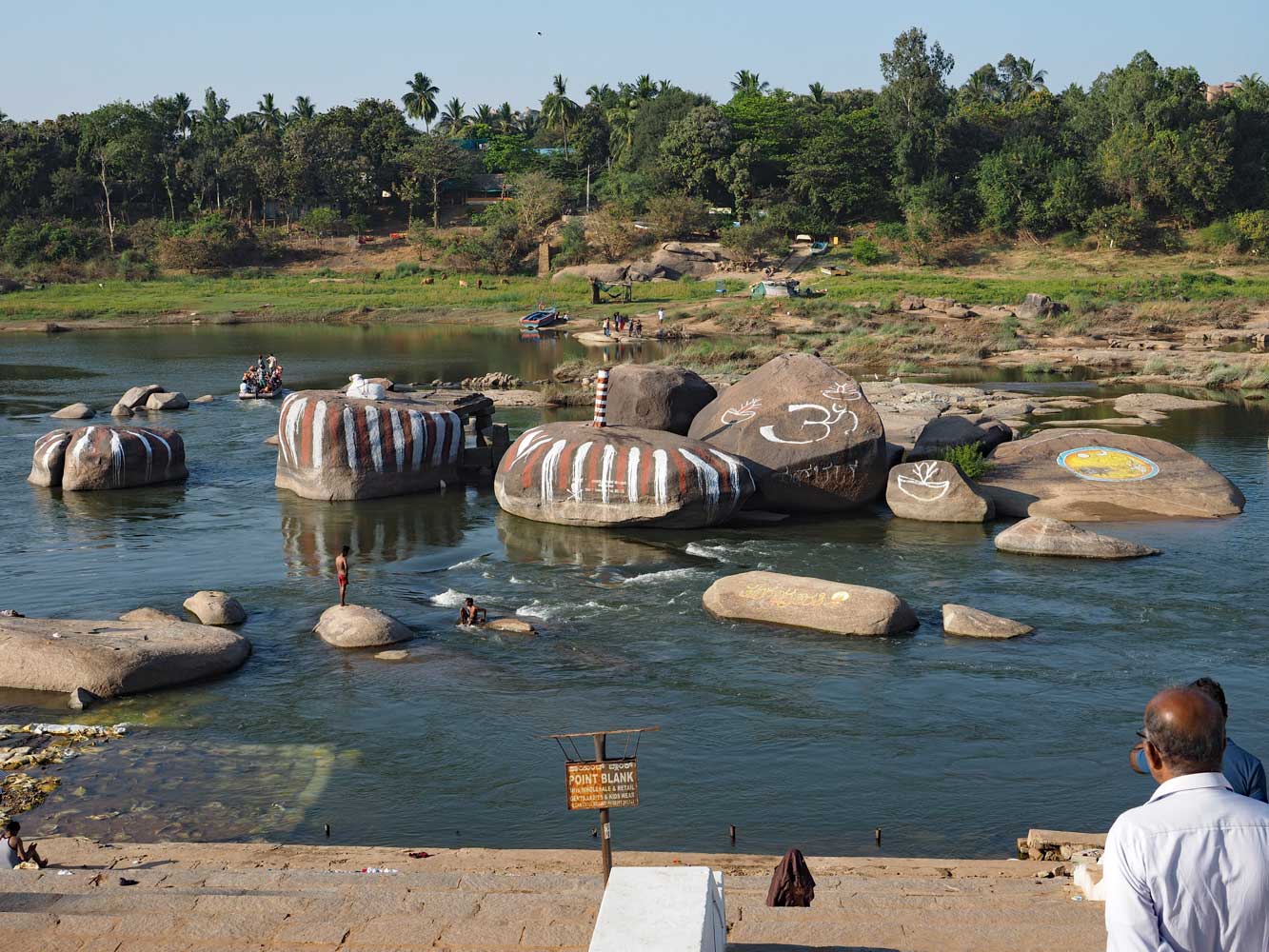
On the ghats of Tungabhadra River
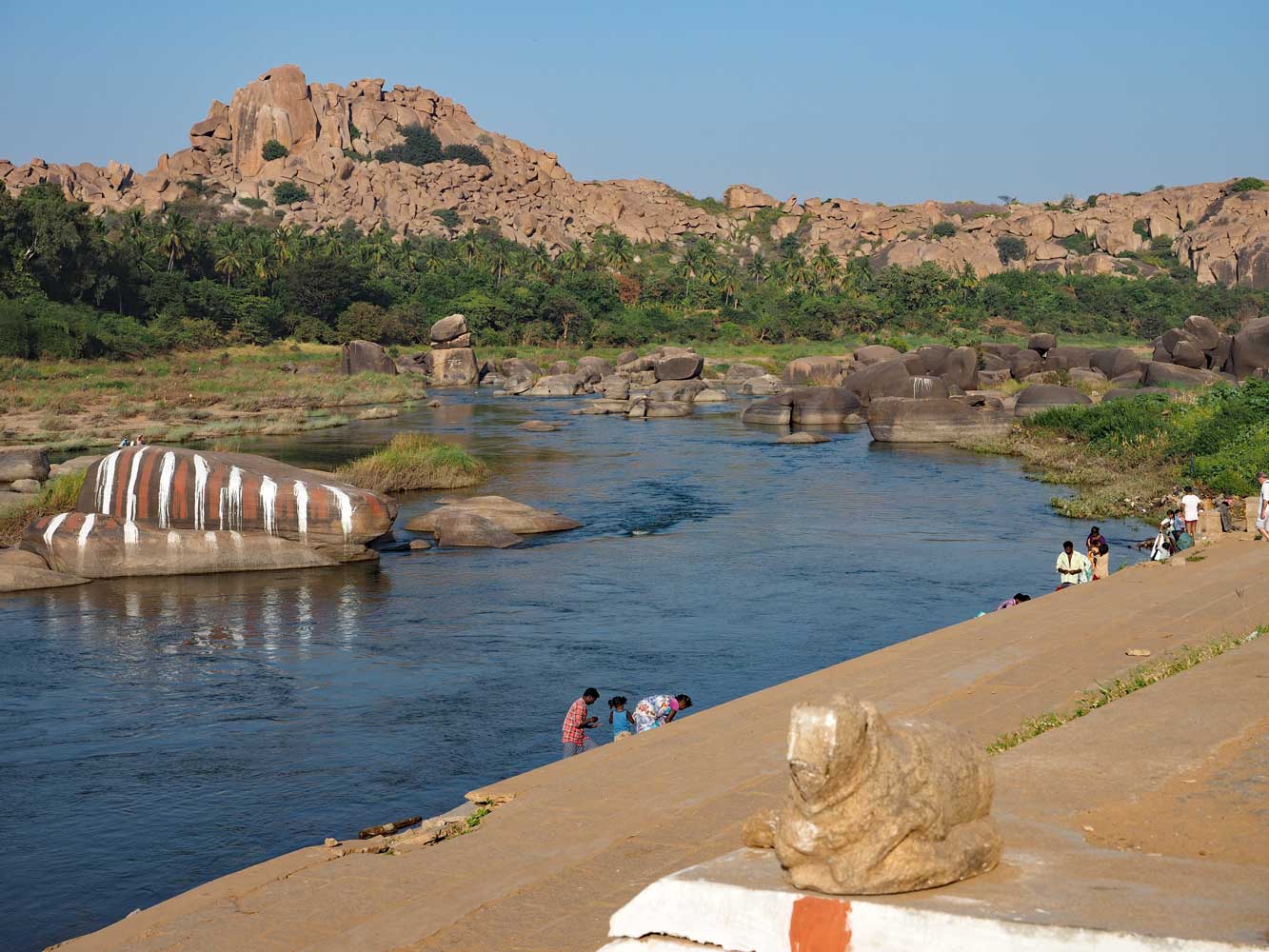
View east down the Tungabhadra River
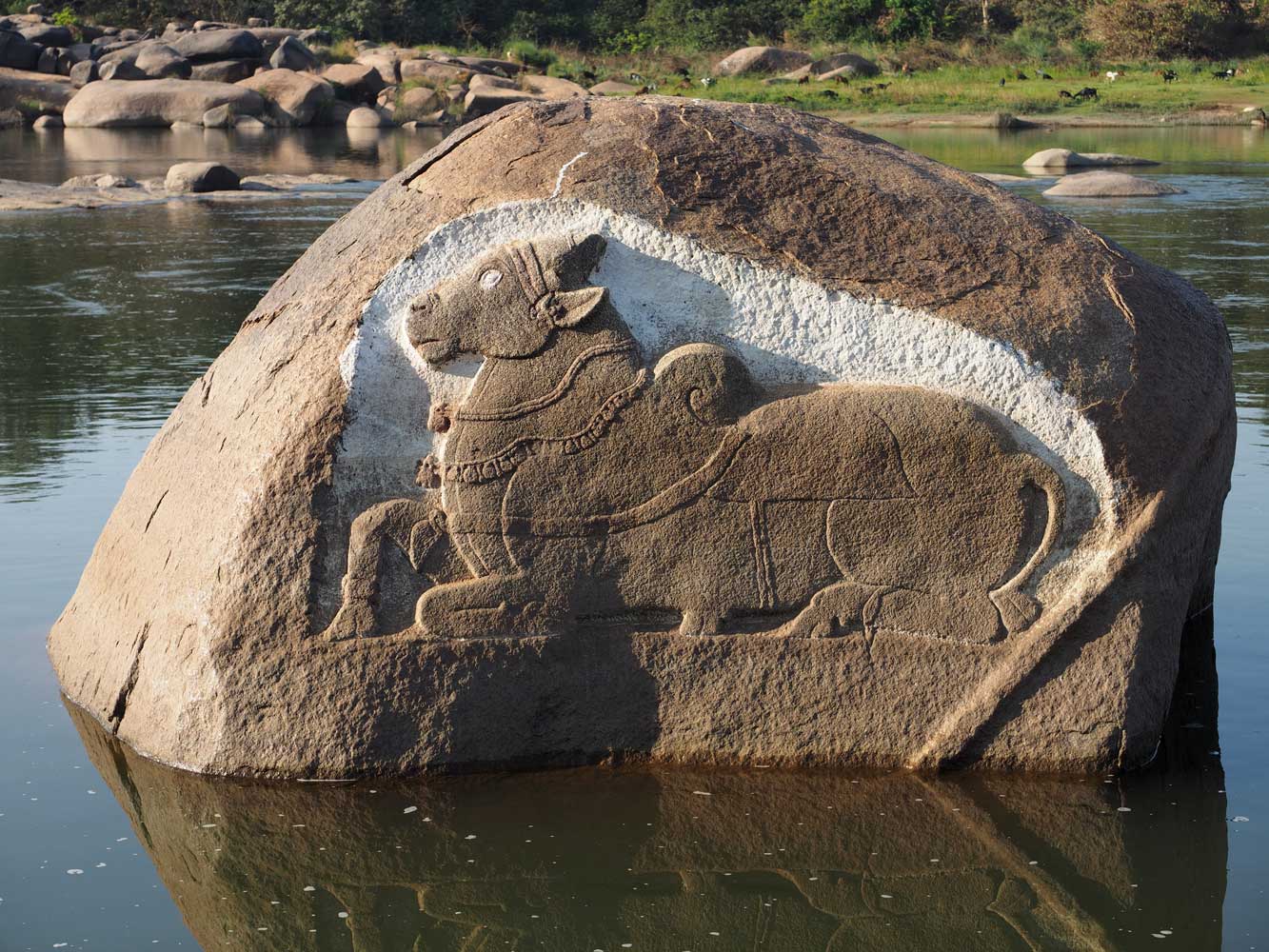
An image of Nandi in the Tungabhadra River
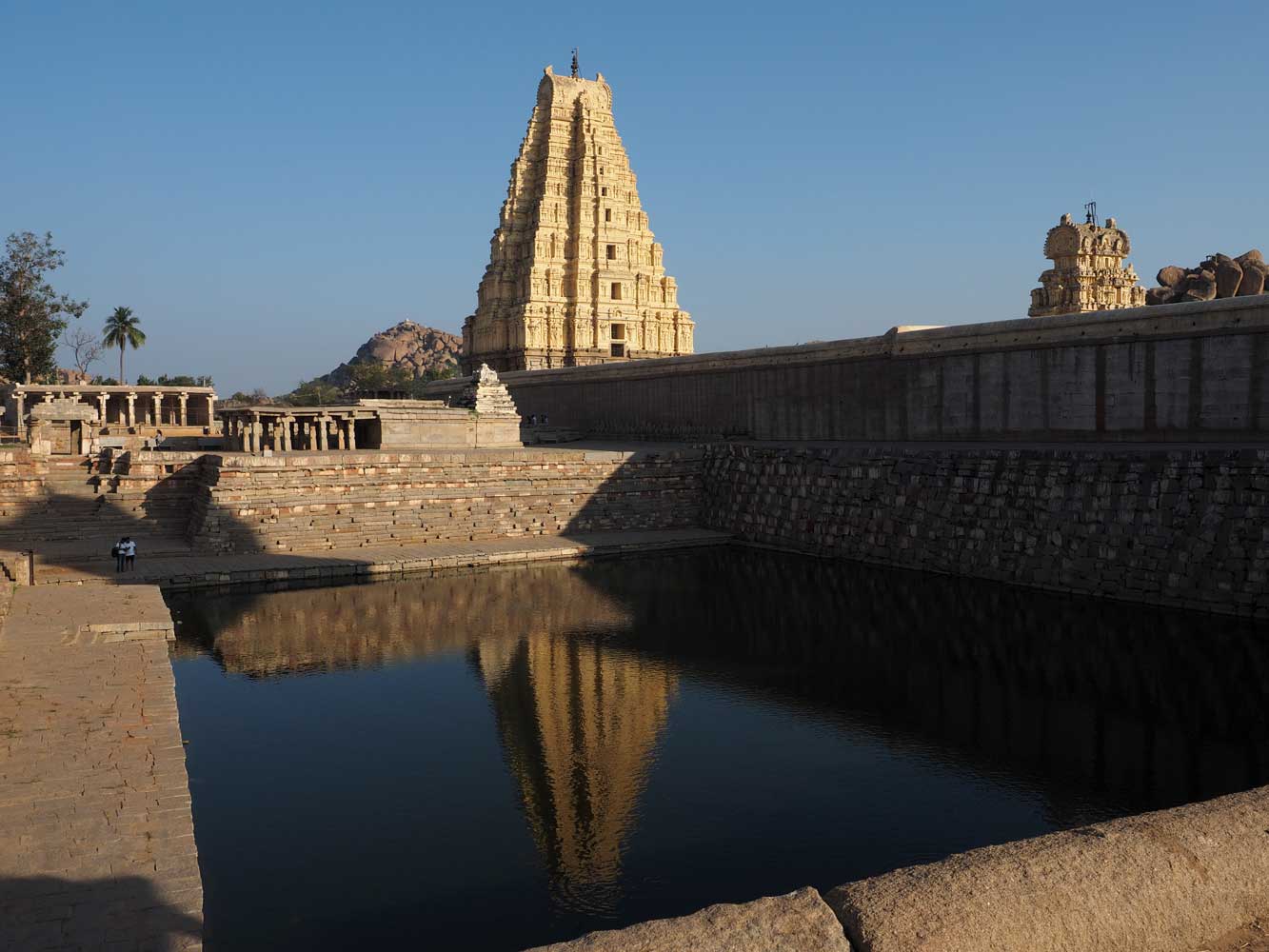
Tank beside Virupaksha Temple
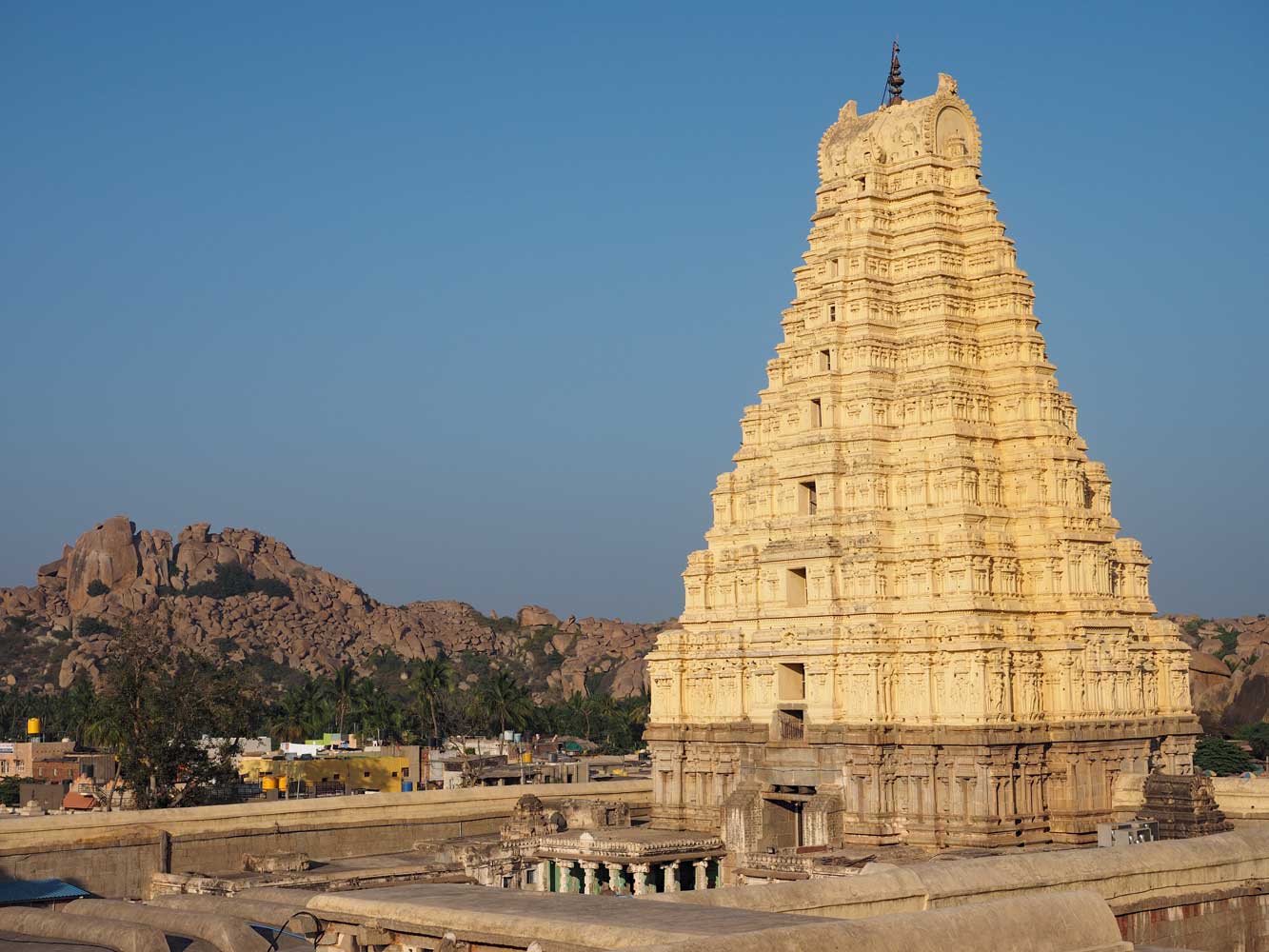
Gopuram of Virupaksha Temple from Hemakuta Hill

One of the many Hindu or Jain temples on Hemakuta Hill
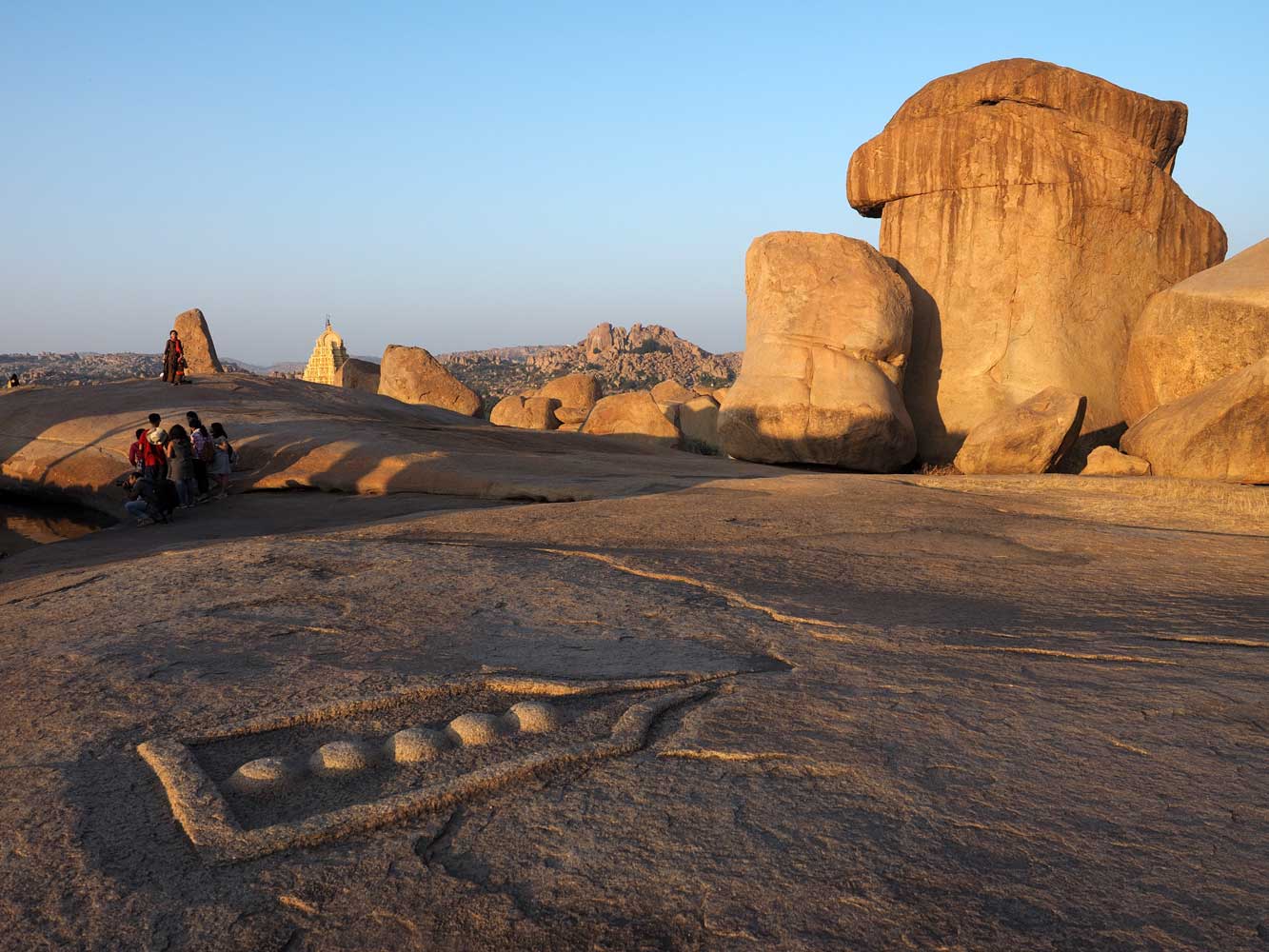
Shiva lingams and boulders bask in the late afternoon sun atop Hemakuta
Hill.
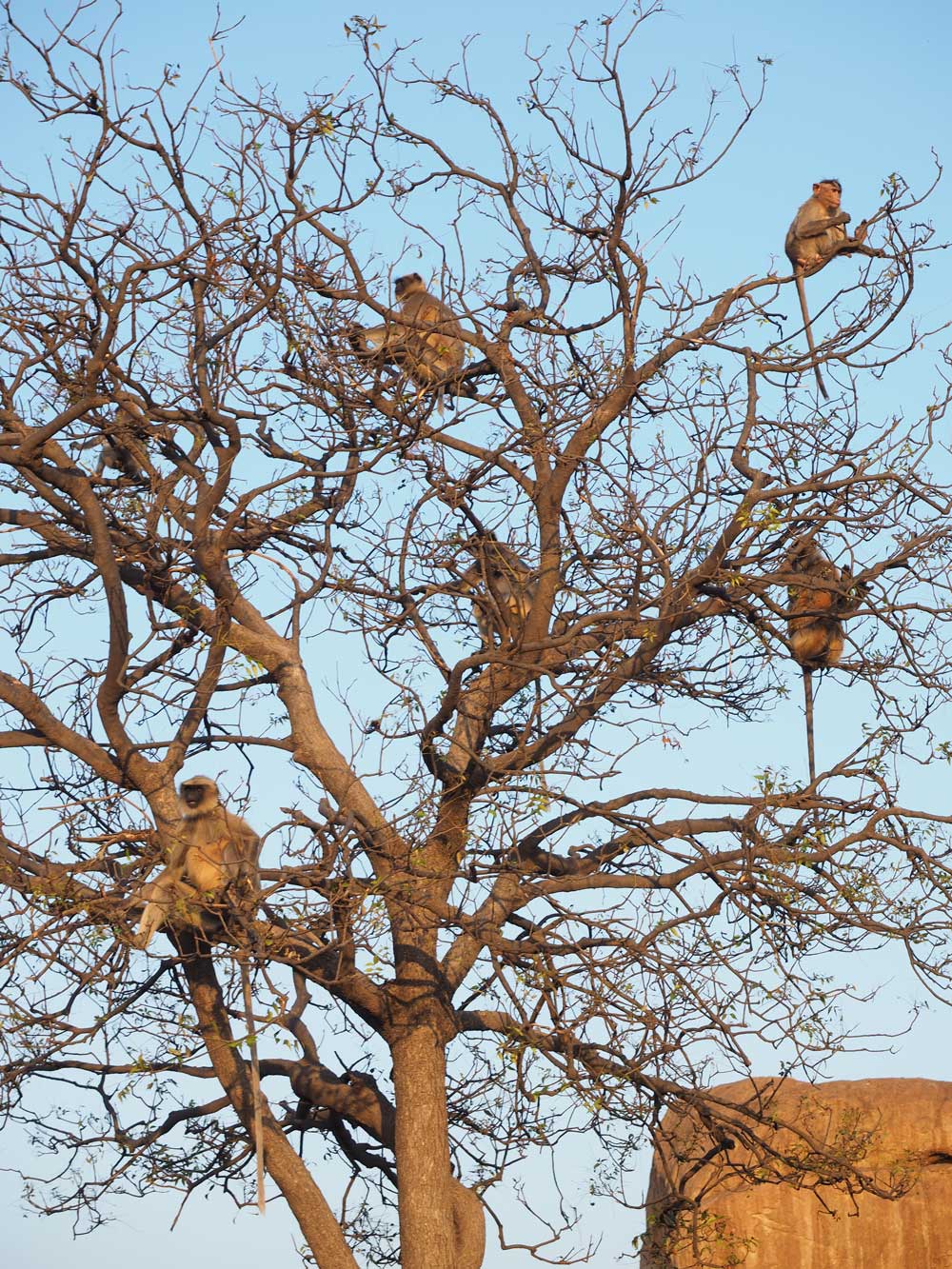
Langurs and a macaque monkey enjoy the sun.

Atop Hemakuta Hill
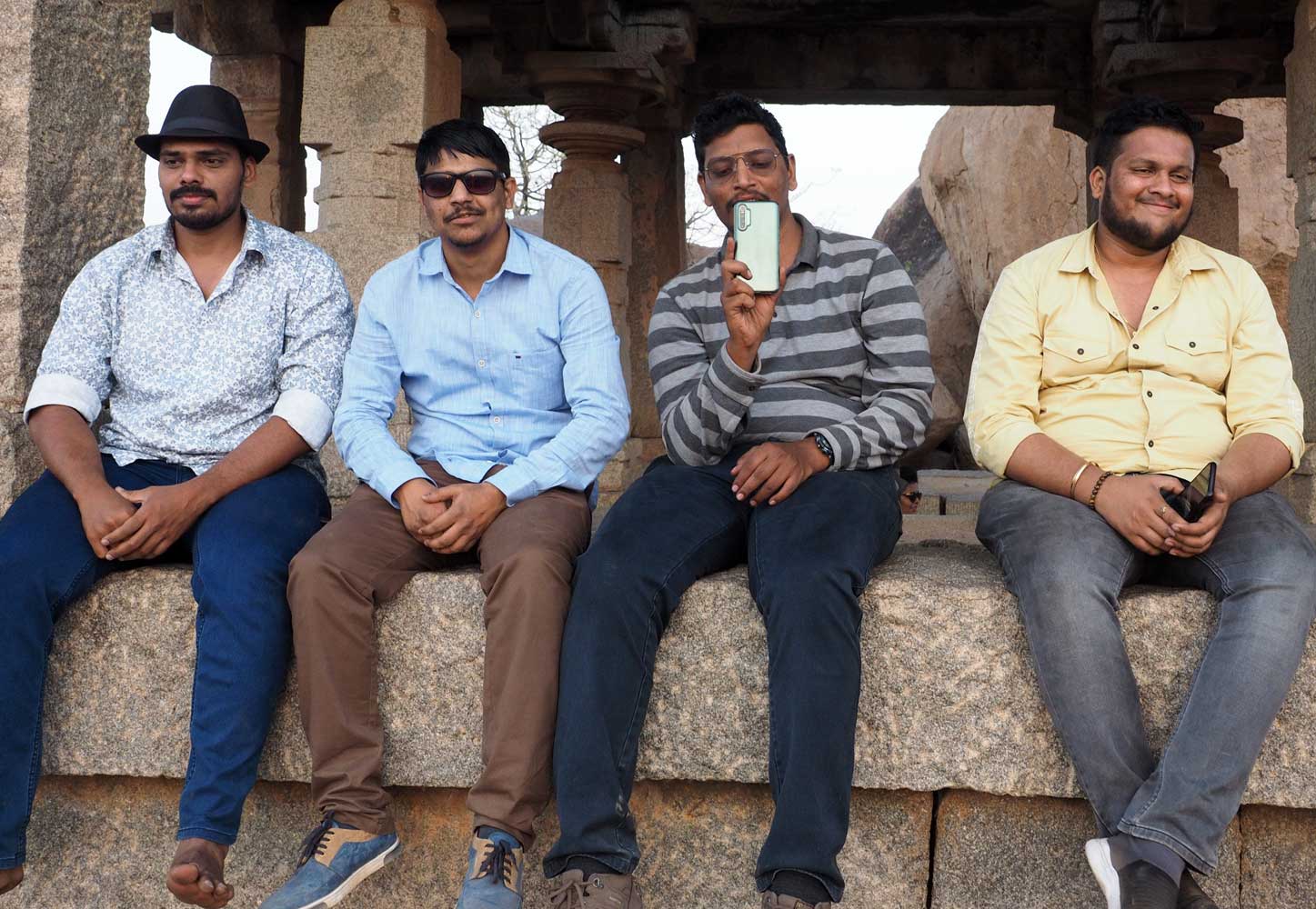
Four friends waiting for the sunset
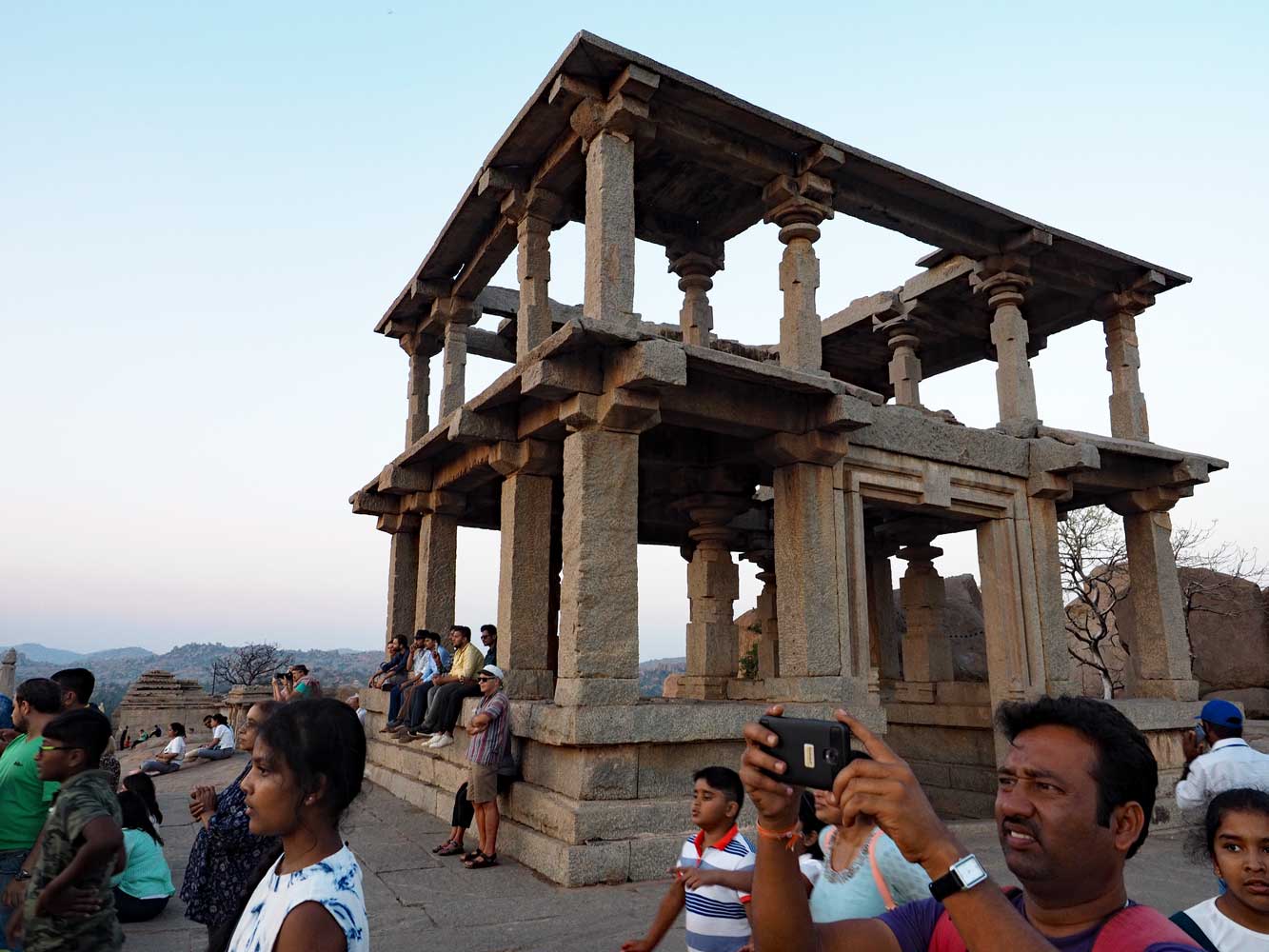
Snapping up the sunset

The sun leaves us atop Hemakuta Hill.
On to Hampi—Part 2
Back to beginning of “Backpacking 2020: India, Singapore, and Philippines”